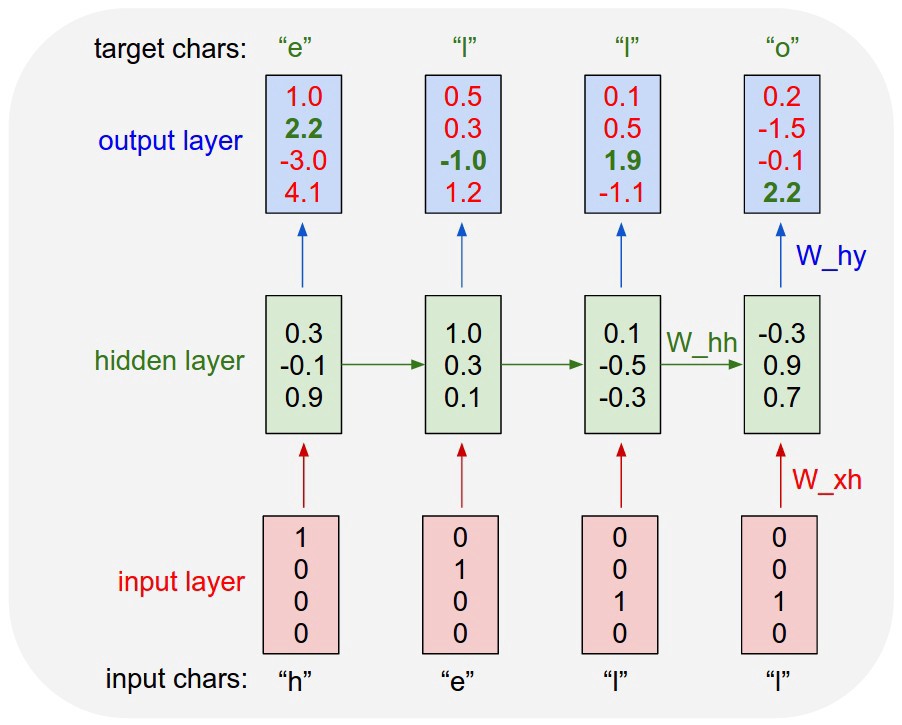
The idea of using robots to do certain jobs is nothing new. You should learn a few things about robots before buying one. Robots can't think for their own good, despite being massive, heavy-metal hunks. They are programmed with a certain plan. They can't make decisions on their own. Below are some facts and figures about robots that will have an impact on our daily lives.
They are big heavy hunks of metal
If we are to believe all the technology hype, robots can be big, heavy, and made of metal. They pack a punch when it comes to power, and if a broken one hurts us or our families, we should be very careful. Our smartphones are so widespread that we cannot live without them. But what if a robot went down? It could lead to a similar disaster for humans.
They are incapable of thinking for themselves
Robots are not autonomous in the biological sense. Computers and other systems, however, are closer. Computers cannot replicate, rebuild, or recover after harm. These functional problems will hopefully be addressed in the future. The morality problem is the only thing that will require a deeper understanding and appreciation of the human mind. Robots could someday be able to think and act just like human beings.

They are unable to think beyond a plan.
There are several reasons why robots can't think outside of outlined goals. These goals are often similar to those of humans. So that they don't make a mistake, robots must be directed by humans. Robots do not possess natural intelligence. They are also limited by their process model. This means that robots can achieve useful goals in ways other than those predetermined by their process models, but it is not an indication of how they think.
They can't decide for themselves.
While autonomous robots could one day be capable of making decisions independently, for now they need human guidance. Robots will need to follow the First Law of Robotics and obey human commands. In the case of humans, robots must also respect the Second Law and not harm humans. Robots will be used in the future if they can be kept safe from human injury.
They can't think in the virtual world.
Karel Capak, a Czech playwright, introduced the robot to the world during the 1920s. Rossum’s Universal Robots, his play, is set inside a factory that creates an artificial protoplasm to make a mechanical human. The play is prescient of current ideas about robots, androids, and the like. The mass-produced workers lack emotional intelligence, are incapable of original thought and care little for their well-being.
They can be used to pet animals
Pets can now have technology robots. Some are capable of interacting with humans in social and emotional ways. They can even be programmed to imitate human behavior and touch. This robot teddy bear can hug and be held by its owner. Haptic Creature, a zoomorphic lap pet, can also sense human touch with simulated stiffening of its ears. CuddleBit robotic pets even have the ability to mimic breathing.

They can assemble furniture
The technology of assembling furniture by robots is not new. Robots are already able to perform other industrial tasks such as bonding glass and drilling holes in metal. They can also learn to assemble furniture by studying the finished products and watching people. But robots cannot assemble furniture as well as humans. Robots will eventually be able build furniture like human beings. However, humans will continue to be required to do the job.
They can even pick up newspapers
Technology robots can grab newspapers. While it may seem impossible at first glance, MIT researchers have created a soft-gripper robot arm that can sort through different materials including paper. These robots work in complete darkness, so they don't need to be lit. These robots are extremely efficient and could replace many people's jobs including sorting newspapers. Here's how it works. Robots will need attention to the environment but will not hurt workers.
They may even be able to have a formal conversation
People have long developed emotional attachments to objects, including technology robots. It is easy to imagine that an unpredictable android may be attractive to those who struggle to deal with humans. True human-robot friendship is still a question. Robots are not yet able to feel feelings, but true friendships could increase their utility. Future engineers will not be hindered by this limitation from designing robots that can converse in human-like ways with humans.
FAQ
Where did AI get its start?
The idea of artificial intelligence was first proposed by Alan Turing in 1950. He stated that intelligent machines could trick people into believing they are talking to another person.
John McCarthy later took up the idea and wrote an essay titled "Can Machines Think?" John McCarthy, who wrote an essay called "Can Machines think?" in 1956. He described the difficulties faced by AI researchers and offered some solutions.
What will the government do about AI regulation?
Governments are already regulating AI, but they need to do it better. They must make it clear that citizens can control the way their data is used. Aim to make sure that AI isn't used in unethical ways by companies.
They should also make sure we aren't creating an unfair playing ground between different types businesses. Small business owners who want to use AI for their business should be allowed to do this without restrictions from large companies.
How does AI work
It is important to have a basic understanding of computing principles before you can understand how AI works.
Computers store information on memory. Computers work with code programs to process the information. The code tells computers what to do next.
An algorithm is a sequence of instructions that instructs the computer to do a particular task. These algorithms are usually written in code.
An algorithm is a recipe. A recipe might contain ingredients and steps. Each step may be a different instruction. One instruction may say "Add water to the pot", while another might say "Heat the pot until it boils."
Who is the leader in AI today?
Artificial Intelligence, also known as computer science, is the study of creating intelligent machines capable to perform tasks that normally require human intelligence.
There are many types today of artificial Intelligence technologies. They include neural networks, expert, machine learning, evolutionary computing. Fuzzy logic, fuzzy logic. Rule-based and case-based reasoning. Knowledge representation. Ontology engineering.
It has been argued that AI cannot ever fully understand the thoughts of humans. But, deep learning and other recent developments have made it possible to create programs capable of performing certain tasks.
Google's DeepMind unit today is the world's leading developer of AI software. It was founded in 2010 by Demis Hassabis, previously the head of neuroscience at University College London. DeepMind developed AlphaGo in 2014 to allow professional players to play Go.
How does AI affect the workplace?
It will revolutionize the way we work. We can automate repetitive tasks, which will free up employees to spend their time on more valuable activities.
It will improve customer service and help businesses deliver better products and services.
It will help us predict future trends and potential opportunities.
It will enable companies to gain a competitive disadvantage over their competitors.
Companies that fail to adopt AI will fall behind.
AI: Good or bad?
Both positive and negative aspects of AI can be seen. Positively, AI makes things easier than ever. We no longer need to spend hours writing programs that perform tasks such as word processing and spreadsheets. Instead, we ask our computers for these functions.
People fear that AI may replace humans. Many believe that robots will eventually become smarter than their creators. This could lead to robots taking over jobs.
What are the benefits from AI?
Artificial Intelligence, a rapidly developing technology, could transform the way we live our lives. It has already revolutionized industries such as finance and healthcare. It's predicted that it will have profound effects on everything, from education to government services, by 2025.
AI is being used already to solve problems in the areas of medicine, transportation, energy security, manufacturing, and transport. The possibilities of AI are limitless as new applications become available.
What is the secret to its uniqueness? It learns. Computers can learn, and they don't need any training. They simply observe the patterns of the world around them and apply these skills as needed.
It's this ability to learn quickly that sets AI apart from traditional software. Computers are capable of reading millions upon millions of pages every second. They can instantly translate foreign languages and recognize faces.
Artificial intelligence doesn't need to be manipulated by humans, so it can do tasks much faster than human beings. In fact, it can even outperform us in certain situations.
2017 was the year of Eugene Goostman, a chatbot created by researchers. Numerous people were fooled by the bot into believing that it was Vladimir Putin.
This proves that AI can be convincing. Another benefit is AI's ability adapt. It can be trained to perform new tasks easily and efficiently.
This means that companies do not have to spend a lot of money on IT infrastructure or employ large numbers of people.
Statistics
- While all of it is still what seems like a far way off, the future of this technology presents a Catch-22, able to solve the world's problems and likely to power all the A.I. systems on earth, but also incredibly dangerous in the wrong hands. (forbes.com)
- That's as many of us that have been in that AI space would say, it's about 70 or 80 percent of the work. (finra.org)
- A 2021 Pew Research survey revealed that 37 percent of respondents who are more concerned than excited about AI had concerns including job loss, privacy, and AI's potential to “surpass human skills.” (builtin.com)
- More than 70 percent of users claim they book trips on their phones, review travel tips, and research local landmarks and restaurants. (builtin.com)
- In the first half of 2017, the company discovered and banned 300,000 terrorist-linked accounts, 95 percent of which were found by non-human, artificially intelligent machines. (builtin.com)
External Links
How To
How to make Siri talk while charging
Siri can do many tasks, but Siri cannot communicate with you. This is because there is no microphone built into your iPhone. If you want Siri to respond back to you, you must use another method such as Bluetooth.
Here's how you can make Siri talk when charging.
-
Under "When Using Assistive touch", select "Speak when locked"
-
Press the home button twice to activate Siri.
-
Ask Siri to Speak.
-
Say, "Hey Siri."
-
Speak "OK"
-
You can say, "Tell us something interesting!"
-
Speak out, "I'm bored," Play some music, "Call my friend," Remind me about ""Take a photograph," Set a timer," Check out," and so forth.
-
Say "Done."
-
Thank her by saying "Thank you"
-
If you are using an iPhone X/XS, remove the battery cover.
-
Reinsert the battery.
-
Connect the iPhone to your computer.
-
Connect the iPhone to iTunes.
-
Sync the iPhone.
-
Allow "Use toggle" to turn the switch on.